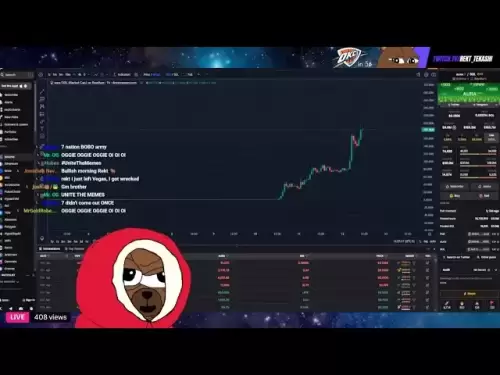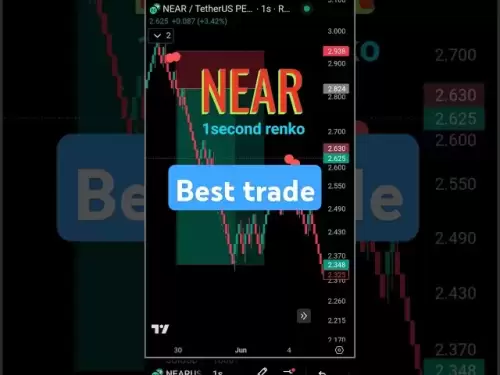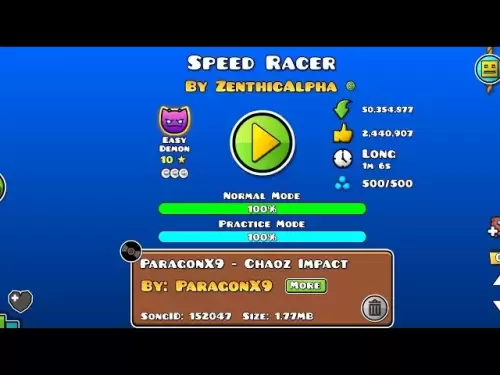-
 Bitcoin
Bitcoin $104,522.6322
-3.13% -
 Ethereum
Ethereum $2,523.2617
-8.98% -
 Tether USDt
Tether USDt $1.0004
0.05% -
 XRP
XRP $2.1152
-5.86% -
 BNB
BNB $652.2893
-2.33% -
 Solana
Solana $144.6351
-9.37% -
 USDC
USDC $0.9995
-0.03% -
 Dogecoin
Dogecoin $0.1735
-9.24% -
 TRON
TRON $0.2736
-0.43% -
 Cardano
Cardano $0.6326
-8.58% -
 Hyperliquid
Hyperliquid $38.5159
-8.14% -
 Sui
Sui $2.9977
-10.56% -
 Chainlink
Chainlink $13.2026
-9.28% -
 UNUS SED LEO
UNUS SED LEO $8.9820
1.39% -
 Bitcoin Cash
Bitcoin Cash $416.2011
-3.39% -
 Stellar
Stellar $0.2574
-7.06% -
 Avalanche
Avalanche $19.0069
-10.26% -
 Toncoin
Toncoin $2.9777
-7.56% -
 Shiba Inu
Shiba Inu $0.0...01168
-9.04% -
 Hedera
Hedera $0.1545
-9.05% -
 Litecoin
Litecoin $83.5565
-7.17% -
 Polkadot
Polkadot $3.8099
-7.40% -
 Ethena USDe
Ethena USDe $1.0004
-0.02% -
 Monero
Monero $313.0679
-4.12% -
 Dai
Dai $0.9998
0.00% -
 Bitget Token
Bitget Token $4.5157
-4.11% -
 Uniswap
Uniswap $7.3677
-9.10% -
 Pepe
Pepe $0.0...01065
-15.22% -
 Aave
Aave $279.7196
-6.75% -
 Pi
Pi $0.5464
-13.61%
How to read SAR when it plunges at the end of the trading day? Is it credible that SAR turns short before the market closes?
When the SAR indicator plunges at the end of the trading day, it may signal a shift from bullish to bearish momentum, crucial for informed trading decisions.
Jun 09, 2025 at 08:49 pm

The Parabolic SAR (Stop and Reverse) is a popular technical indicator used by traders to determine potential reversals in the price direction of an asset. When the SAR indicator plunges at the end of the trading day, it often signals a potential shift in the market's momentum. Understanding how to interpret these movements and their credibility, especially when they occur right before the market closes, is crucial for making informed trading decisions.
Understanding the Parabolic SAR
The Parabolic SAR is designed to provide entry and exit points for trades. It appears on a chart as a series of dots, either above or below the price, depending on the direction of the trend. When the dots are below the price, it suggests a bullish trend, and when they are above the price, it indicates a bearish trend. The indicator's sensitivity can be adjusted by changing the acceleration factor, which affects how quickly the SAR moves towards the price.
SAR Plunging at the End of the Trading Day
When the SAR plunges at the end of the trading day, it means the dots move closer to the price from below, indicating a potential shift from a bullish to a bearish trend. This movement can be particularly significant if it happens right before the market closes, as it may suggest that the bullish momentum is waning. Traders should pay close attention to this signal, as it could mean a reversal is imminent.
Credibility of SAR Turning Short Before Market Close
The credibility of the SAR turning short before the market closes depends on several factors. Firstly, it's essential to consider the overall market context. If the market has been in a strong bullish trend throughout the day, a sudden plunge in the SAR might be less reliable than if it occurs after a day of choppy or indecisive trading. Secondly, the volume of trades during the final minutes of the trading day can also influence the credibility of the signal. High volume at the close can lend more weight to the SAR's indication of a trend reversal.
Confirming the SAR Signal
To increase the credibility of the SAR signal, traders should not rely solely on the SAR indicator. It's advisable to use additional technical indicators to confirm the signal. For instance, if the Relative Strength Index (RSI) shows overbought conditions and begins to decline alongside the SAR plunge, it strengthens the case for a bearish reversal. Similarly, if the Moving Average Convergence Divergence (MACD) crosses into negative territory, it can further corroborate the SAR's bearish signal.
Practical Steps to Analyze SAR Plunging at Market Close
When analyzing a SAR plunging at the end of the trading day, follow these steps:
- Open your trading platform: Ensure you have access to real-time data and charting tools.
- Select the asset: Choose the cryptocurrency you are analyzing.
- Apply the Parabolic SAR indicator: Add the SAR to your chart with the default settings or adjust the acceleration factor as needed.
- Observe the SAR movement: Pay attention to the SAR dots and their position relative to the price throughout the trading day.
- Focus on the last 30 minutes: Zoom in on the chart to closely monitor the SAR's behavior in the final minutes of trading.
- Check for confirmation: Use other indicators like RSI, MACD, or volume to confirm the SAR signal.
- Evaluate the overall market context: Consider the broader market trends and sentiment to assess the reliability of the SAR plunge.
Interpreting SAR Plunges in Different Market Conditions
The interpretation of SAR plunges can vary depending on market conditions. In a volatile market, a SAR plunge might be more frequent and less reliable due to rapid price swings. Conversely, in a stable market, a SAR plunge could be a more significant indicator of a potential trend reversal. Traders should adjust their strategies based on the current market environment and not solely rely on the SAR indicator.
Case Studies of SAR Plunges at Market Close
Examining case studies can provide practical insights into how SAR plunges at the end of the trading day have influenced trading decisions. For example, if Bitcoin's price has been steadily rising throughout the day, but the SAR plunges in the last few minutes, traders who acted on this signal might have positioned themselves for a potential downturn the next day. Analyzing historical data can help traders understand the effectiveness of the SAR in different scenarios.
Combining SAR with Other Technical Analysis Tools
To enhance the effectiveness of the SAR indicator, it's beneficial to combine it with other technical analysis tools. For instance, using trend lines can help identify key support and resistance levels that might coincide with the SAR's signals. Additionally, candlestick patterns can provide further insight into market sentiment and potential reversals. By integrating multiple indicators, traders can make more informed decisions and reduce the risk of false signals.
Frequently Asked Questions
Q: Can the Parabolic SAR be used effectively in all market conditions?
A: The Parabolic SAR can be used in various market conditions, but its effectiveness may vary. In highly volatile markets, the SAR may generate more false signals, whereas in more stable markets, it can be a reliable indicator of trend reversals. Traders should adjust the acceleration factor and use additional indicators to enhance its reliability.
Q: How often should the acceleration factor of the SAR be adjusted?
A: The acceleration factor of the SAR should be adjusted based on the asset's volatility and the trader's strategy. Typically, a higher acceleration factor results in the SAR moving more quickly towards the price, which can be useful in fast-moving markets. However, frequent adjustments can lead to over-optimization, so it's best to set a factor that aligns with your trading style and the asset's typical behavior.
Q: Is it advisable to trade immediately after a SAR plunge at the end of the day?
A: It's not always advisable to trade immediately after a SAR plunge at the end of the day. Traders should wait for confirmation from other indicators and consider the overall market context. Acting on a single indicator without confirmation can increase the risk of entering a trade based on a false signal.
Q: Can the SAR be used for long-term trading, or is it better suited for short-term trading?
A: The SAR is generally better suited for short-term trading due to its sensitivity to price movements. However, it can also be used for long-term trading by adjusting the acceleration factor to a lower value, which makes the indicator less responsive to short-term fluctuations and more aligned with longer-term trends.
Disclaimer:info@kdj.com
The information provided is not trading advice. kdj.com does not assume any responsibility for any investments made based on the information provided in this article. Cryptocurrencies are highly volatile and it is highly recommended that you invest with caution after thorough research!
If you believe that the content used on this website infringes your copyright, please contact us immediately (info@kdj.com) and we will delete it promptly.
- VeChain (VET) and Unilabs Finance (UNIL) Are the Next Altcoins Primed for Gains in 2026
- 2025-06-13 17:10:12
- A Growing Share of Bitcoin's Circulating Supply Is Now Concentrated in the Hands of Institutional Players
- 2025-06-13 17:10:12
- Tether Investments Acquires 31.9% of Elemental Shares from La Mancha Investments
- 2025-06-13 17:05:12
- Qubetics Emerges as a Force Shifting Market Sentiment Expanding Beyond Speculation
- 2025-06-13 17:05:12
- AurealOne ($DLUME): GameFi-Ready Blockchain at Lightning Speed
- 2025-06-13 17:00:12
- SBET token reaches a new all-time high, surging 34.26% in 4 days
- 2025-06-13 17:00:12
Related knowledge
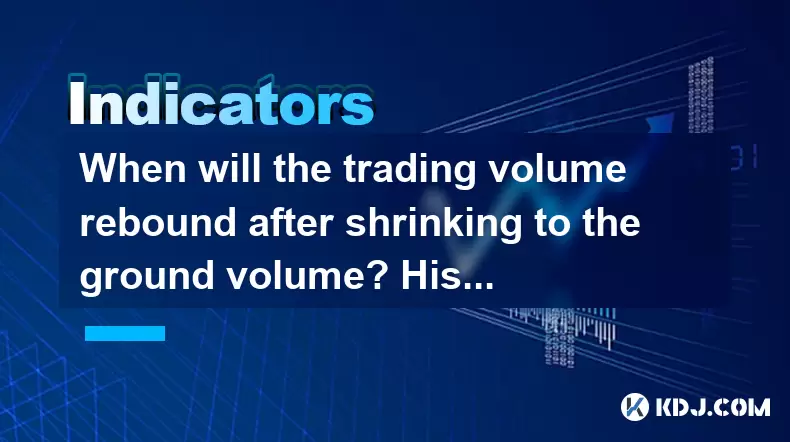
When will the trading volume rebound after shrinking to the ground volume? Historical percentile comparison method
Jun 13,2025 at 03:36pm
Understanding the Ground Volume Concept in Cryptocurrency MarketsIn cryptocurrency trading, 'ground volume' refers to a period when the trading volume of a particular asset or market drops significantly, often reaching multi-month or even multi-year lows. This phenomenon typically signals a lack of interest from traders and investors, suggesting that th...

How to read the CR indicator's four lines that diverge and then converge? Key pressure point identification skills
Jun 13,2025 at 12:21pm
Understanding the CR Indicator in Cryptocurrency TradingThe CR indicator, also known as the Chikin Ratio or Chaikin Oscillator, is a technical analysis tool widely used in cryptocurrency trading to gauge momentum and potential price reversals. It combines volume and price data to provide traders with insights into market strength and weakness. The indic...

What should I do if the ASI vibration rise and fall indicator is not synchronized with the price? When should I believe in the indicator?
Jun 13,2025 at 12:29pm
Understanding the ASI Vibration Rise and Fall IndicatorThe Accumulation Swing Index (ASI) is a technical indicator developed by Welles Wilder to help traders identify potential reversals and confirm trends in price movements. The vibration rise and fall aspect of the ASI refers to how the line oscillates above and below its zero line, indicating shifts ...
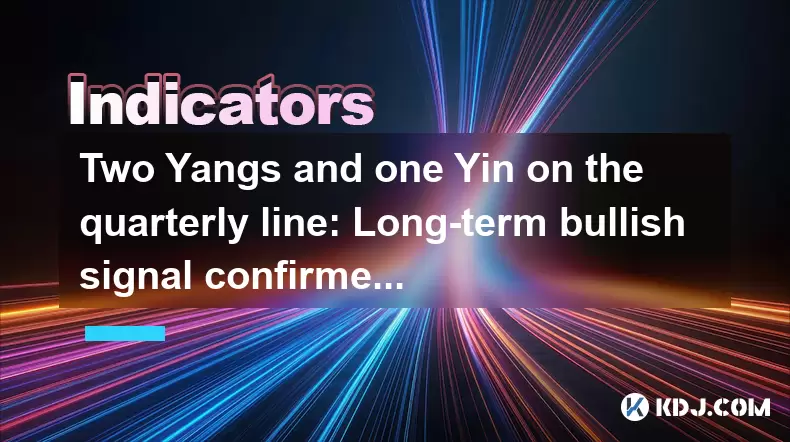
Two Yangs and one Yin on the quarterly line: Long-term bullish signal confirmed?
Jun 12,2025 at 07:00am
Understanding the 'Two Yangs and One Yin' Candlestick PatternIn technical analysis, candlestick patterns play a pivotal role in identifying potential market reversals or continuations. The 'Two Yangs and One Yin' pattern is one such formation that traders often observe on longer timeframes like the quarterly chart. This pattern consists of two bullish (...
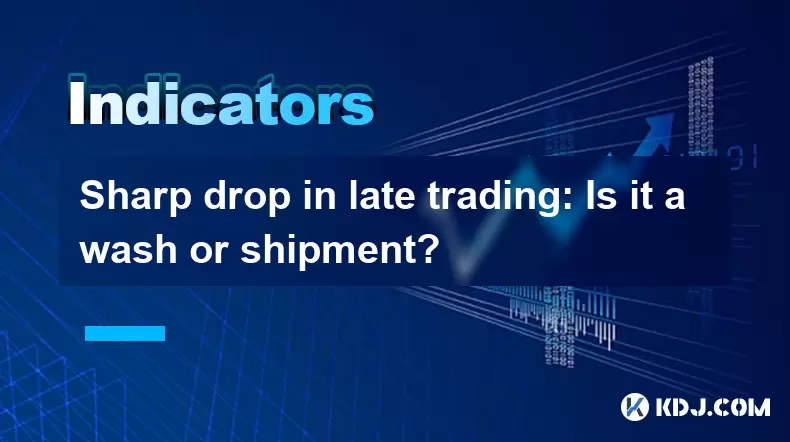
Sharp drop in late trading: Is it a wash or shipment?
Jun 13,2025 at 04:36pm
Understanding the Sharp Drop in Late TradingA sharp drop in late trading often raises concerns among cryptocurrency traders and investors. This phenomenon refers to a sudden, significant decline in the price of a digital asset during off-peak hours or after regular market activity has slowed down. The timing is critical because lower trading volumes dur...
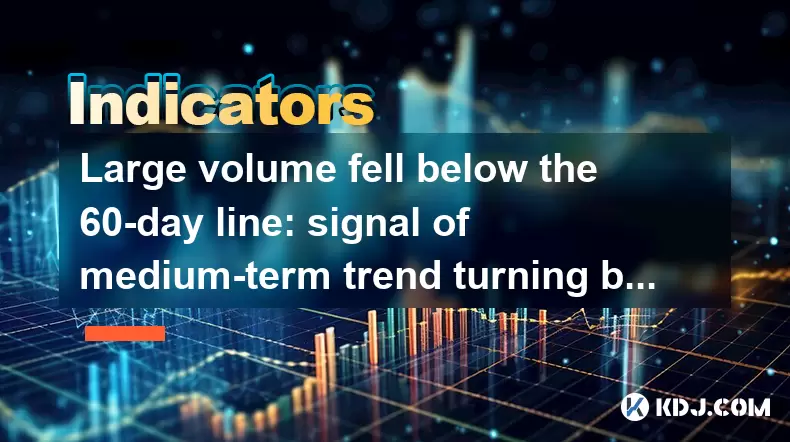
Large volume fell below the 60-day line: signal of medium-term trend turning bearish?
Jun 13,2025 at 03:42am
Understanding the 60-Day Moving Average in CryptocurrencyIn cryptocurrency trading, technical analysis plays a crucial role in predicting price movements. One of the most commonly used indicators is the 60-day moving average (MA), which smooths out price data over the last 60 days to provide traders with insights into the medium-term trend. When large v...

When will the trading volume rebound after shrinking to the ground volume? Historical percentile comparison method
Jun 13,2025 at 03:36pm
Understanding the Ground Volume Concept in Cryptocurrency MarketsIn cryptocurrency trading, 'ground volume' refers to a period when the trading volume of a particular asset or market drops significantly, often reaching multi-month or even multi-year lows. This phenomenon typically signals a lack of interest from traders and investors, suggesting that th...

How to read the CR indicator's four lines that diverge and then converge? Key pressure point identification skills
Jun 13,2025 at 12:21pm
Understanding the CR Indicator in Cryptocurrency TradingThe CR indicator, also known as the Chikin Ratio or Chaikin Oscillator, is a technical analysis tool widely used in cryptocurrency trading to gauge momentum and potential price reversals. It combines volume and price data to provide traders with insights into market strength and weakness. The indic...

What should I do if the ASI vibration rise and fall indicator is not synchronized with the price? When should I believe in the indicator?
Jun 13,2025 at 12:29pm
Understanding the ASI Vibration Rise and Fall IndicatorThe Accumulation Swing Index (ASI) is a technical indicator developed by Welles Wilder to help traders identify potential reversals and confirm trends in price movements. The vibration rise and fall aspect of the ASI refers to how the line oscillates above and below its zero line, indicating shifts ...

Two Yangs and one Yin on the quarterly line: Long-term bullish signal confirmed?
Jun 12,2025 at 07:00am
Understanding the 'Two Yangs and One Yin' Candlestick PatternIn technical analysis, candlestick patterns play a pivotal role in identifying potential market reversals or continuations. The 'Two Yangs and One Yin' pattern is one such formation that traders often observe on longer timeframes like the quarterly chart. This pattern consists of two bullish (...

Sharp drop in late trading: Is it a wash or shipment?
Jun 13,2025 at 04:36pm
Understanding the Sharp Drop in Late TradingA sharp drop in late trading often raises concerns among cryptocurrency traders and investors. This phenomenon refers to a sudden, significant decline in the price of a digital asset during off-peak hours or after regular market activity has slowed down. The timing is critical because lower trading volumes dur...

Large volume fell below the 60-day line: signal of medium-term trend turning bearish?
Jun 13,2025 at 03:42am
Understanding the 60-Day Moving Average in CryptocurrencyIn cryptocurrency trading, technical analysis plays a crucial role in predicting price movements. One of the most commonly used indicators is the 60-day moving average (MA), which smooths out price data over the last 60 days to provide traders with insights into the medium-term trend. When large v...
See all articles





















